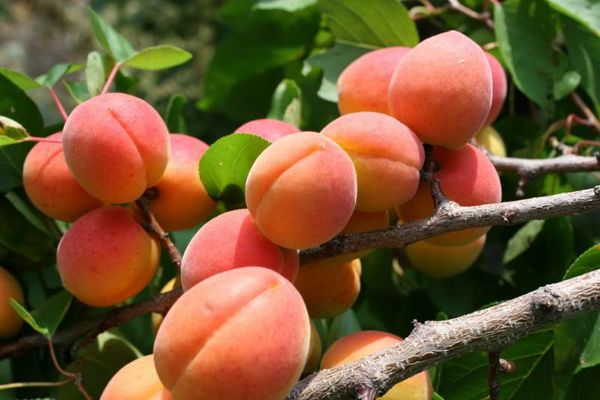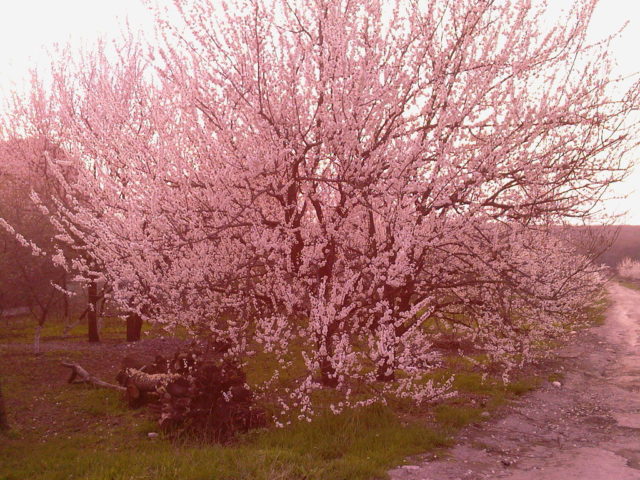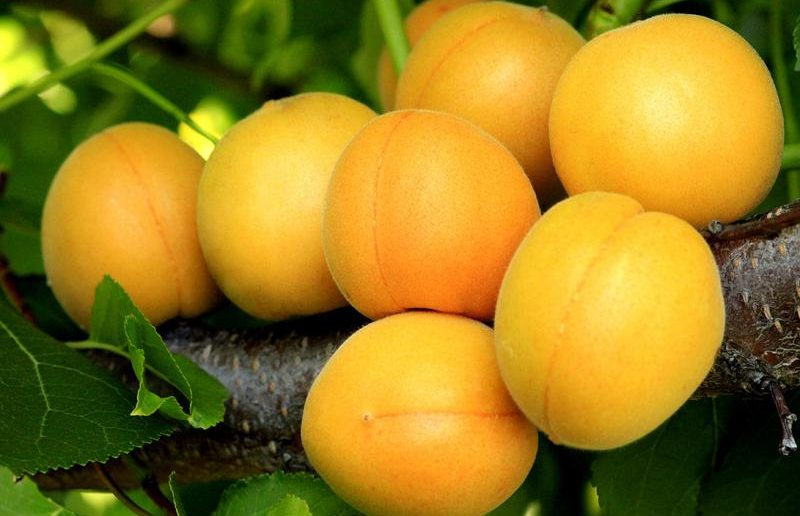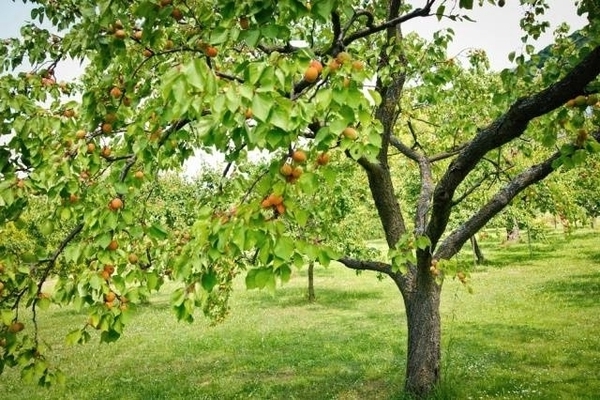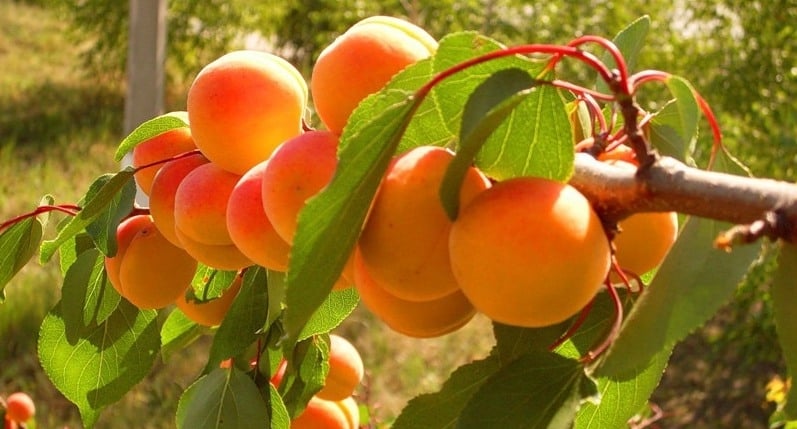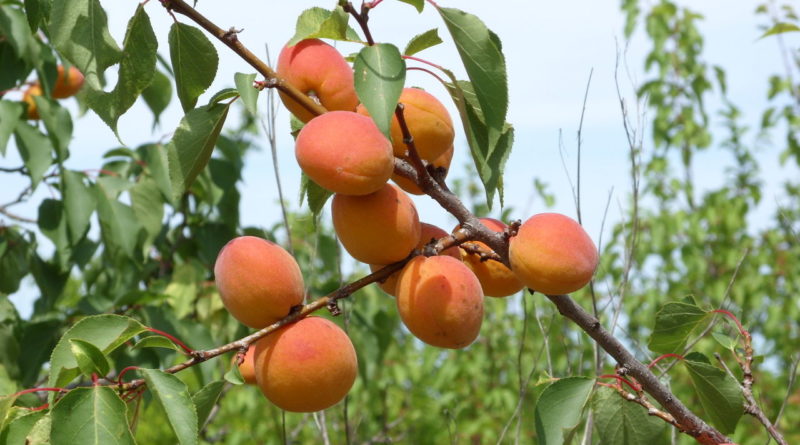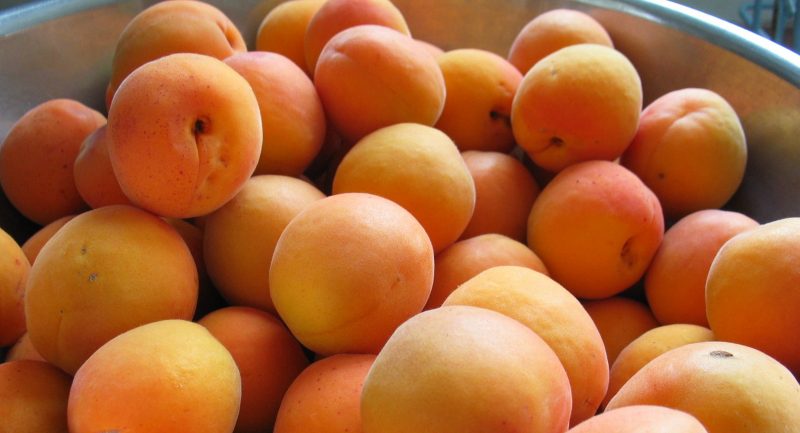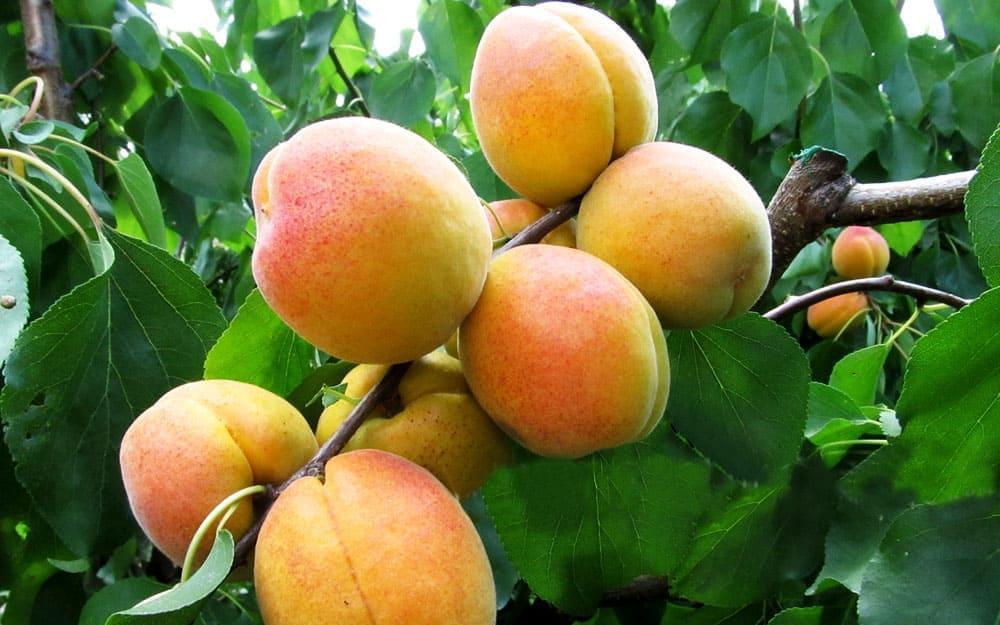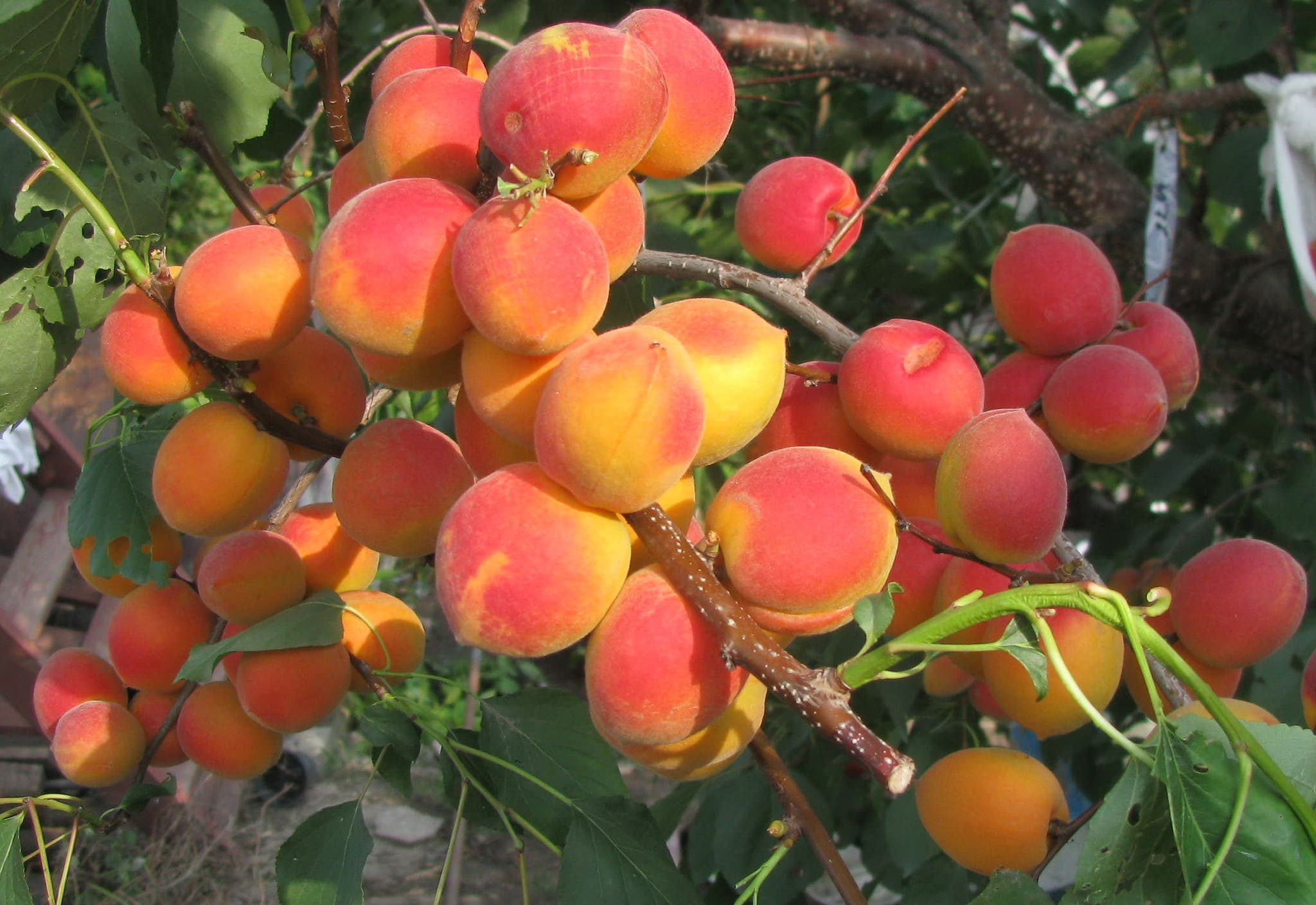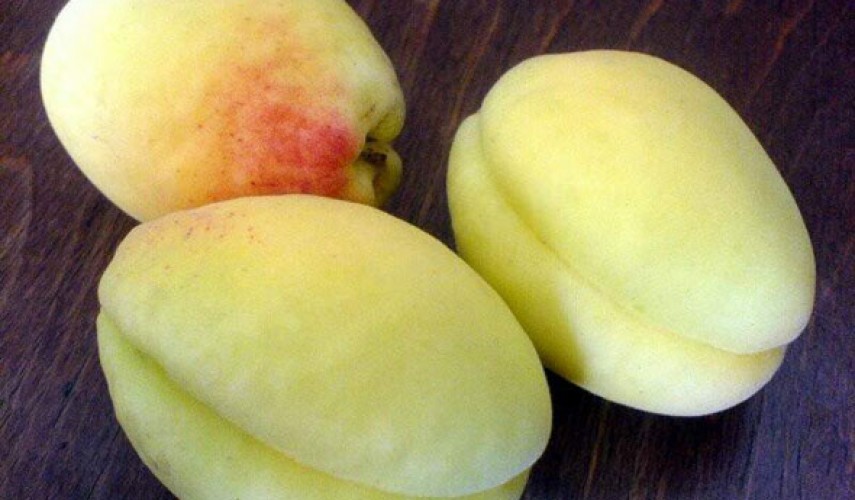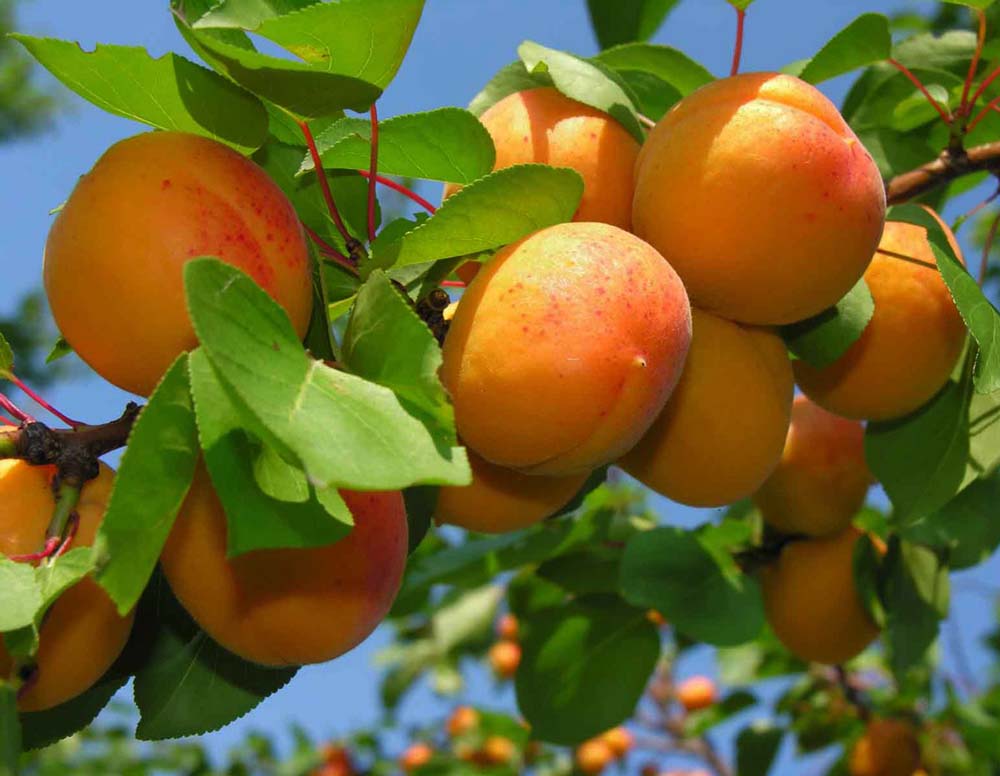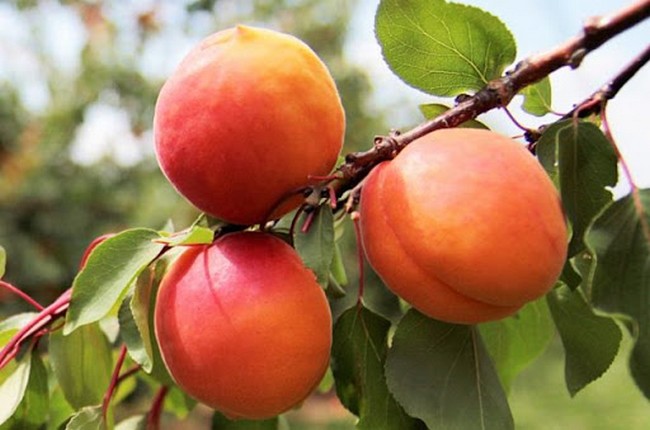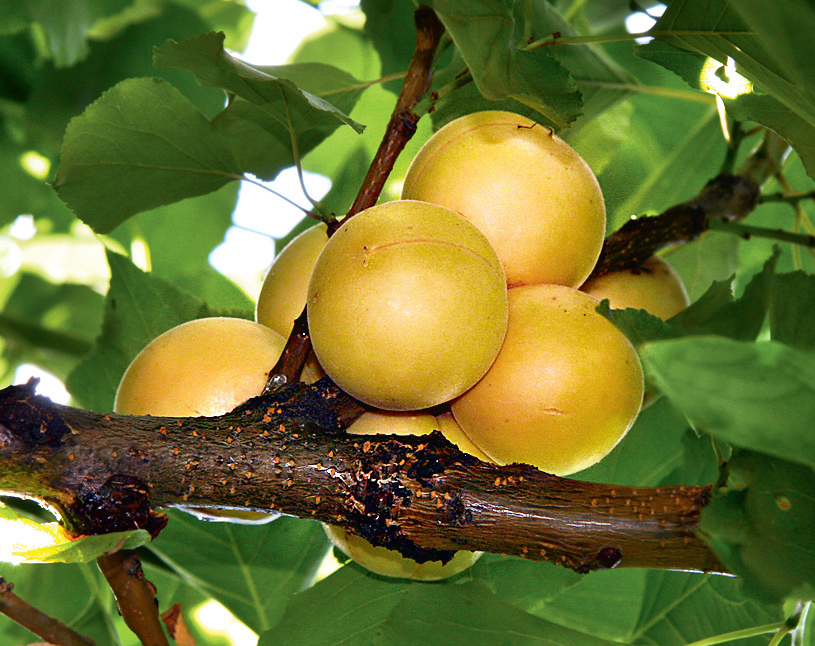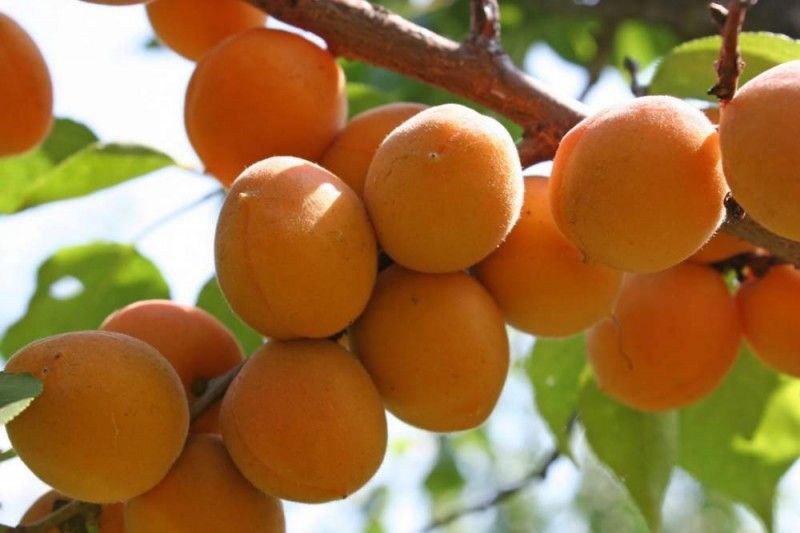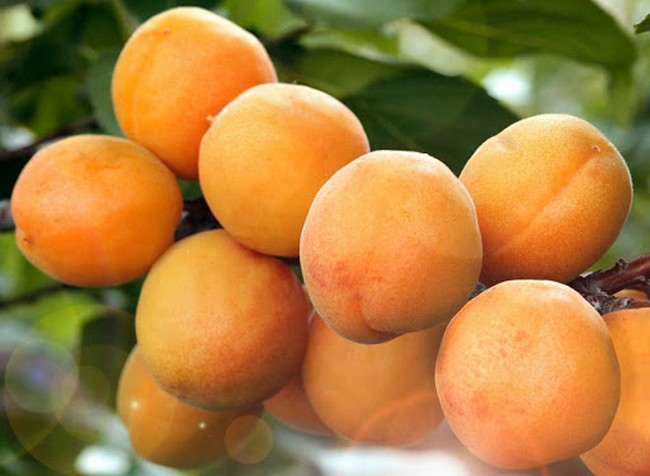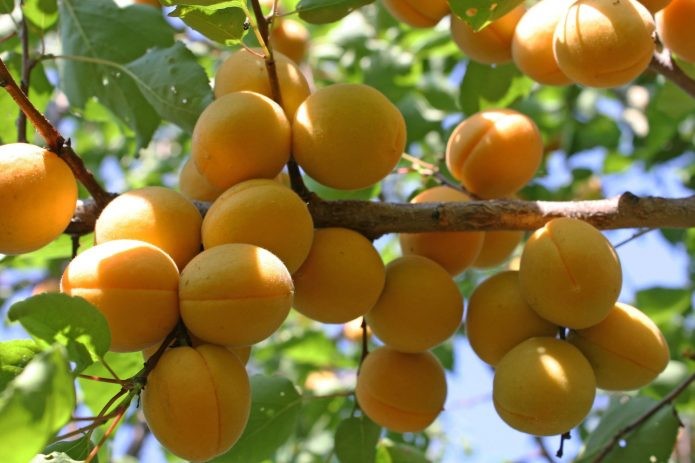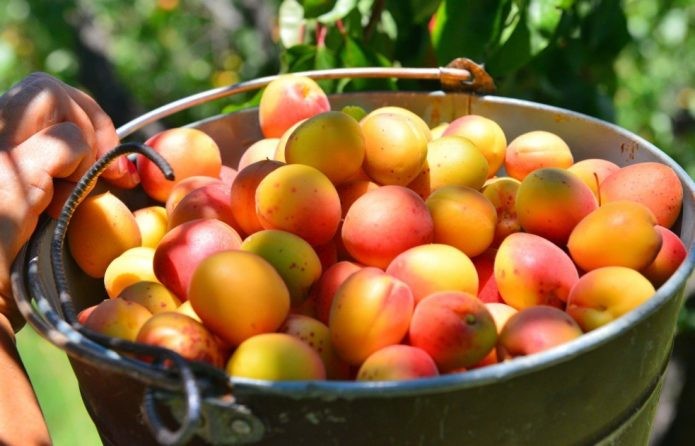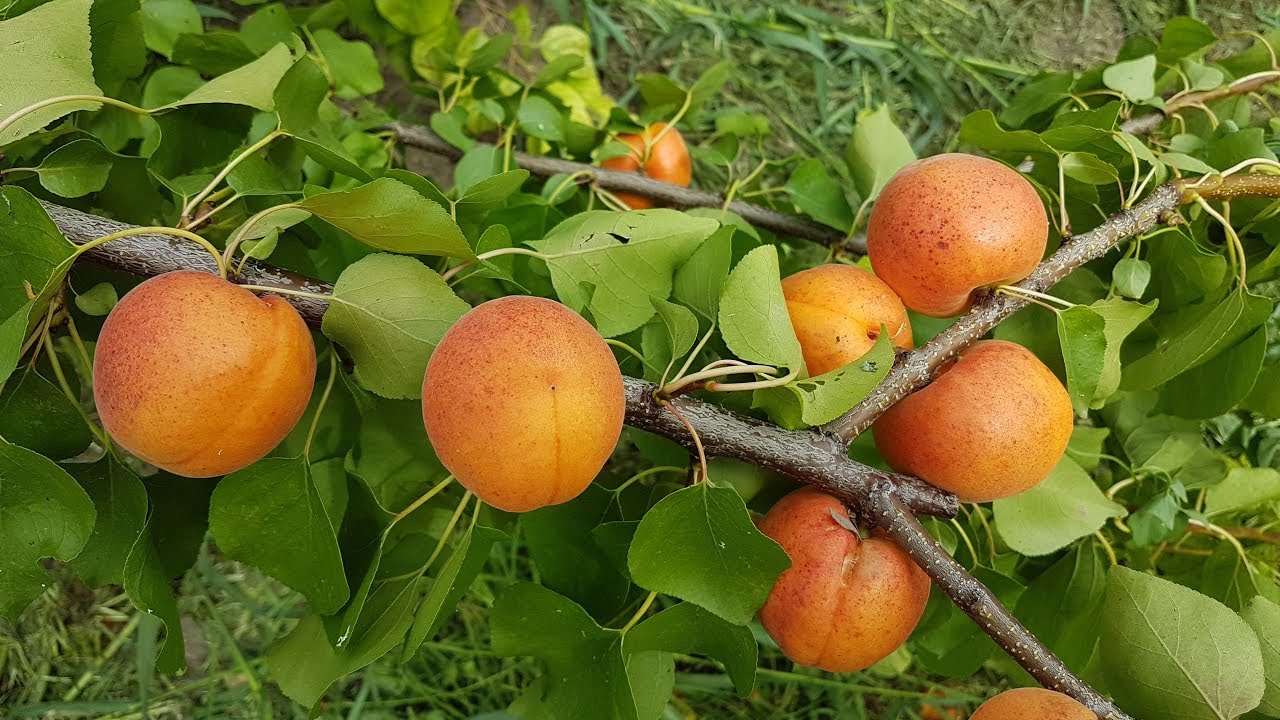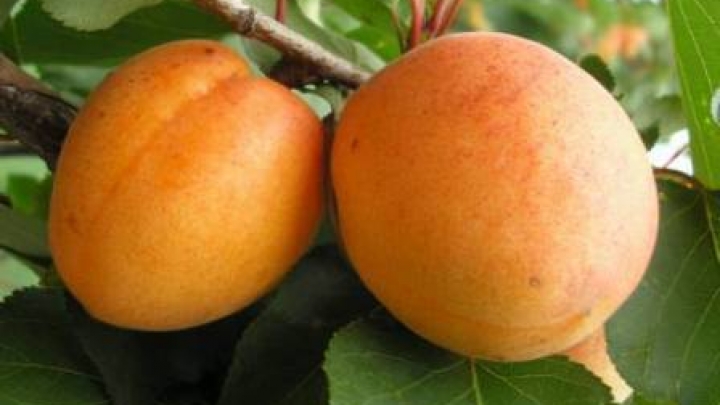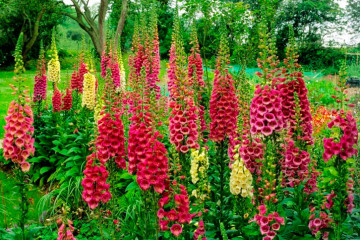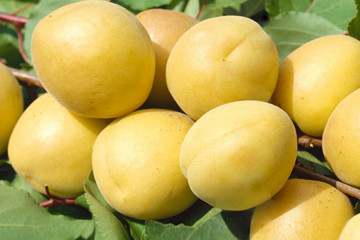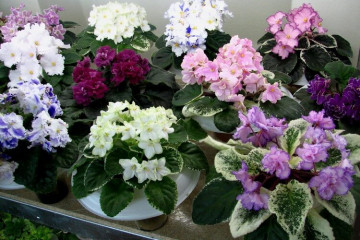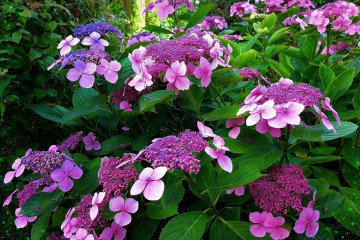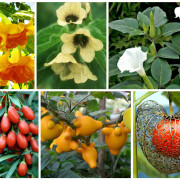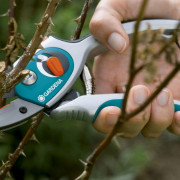Apricot varieties: the best large varieties in the world
Content:
Almost every gardener in our country is engaged in the cultivation of apricots on their site. There are a huge number of varieties of fruit crops that differ in taste, winter hardiness, ripening rate and appearance. Below you can find out in detail the most popular of them.
Apricot: a short description of the plant
Apricot belongs to the category of deciduous trees, the height of which reaches 6-8 m, and the diameter of the trunk is within 30 cm.The shape of the leaf plates is rounded, their length is 8-9 cm, their width is 6-8 cm.Single flowers are painted white or pink shades. Their diameter is 3-4 cm. Fruits of a round shape are rather fleshy and juicy. They can be painted in different colors - from light orange, yellow tones to reddish-orange, depending on the variety of apricots. Fruit weight reaches 20-80 g. Ripe apricots can be eaten fresh, prepared from them:
- jam;
- jam;
- drying (dried apricots and apricots).
The most delicious and sweet varieties of apricots for the Moscow region
There are a large number of varieties of apricot that are grown in the Moscow region.
Aquarius
The mid-season apricot variety grows rather quickly. The spreading crown of the tree is not too dense. Slightly pubescent fruits are colored in a yellow-orange palette. Their mass can reach 20-25 g. The pulp of juicy fruits pleases with a rich sweet taste with a hint of sourness. The consistency is delicate. Apricots of the Aquarius variety can be used for fresh consumption, as well as for making compote, jam, preserves.
Apricot Viking
There are types of apricots that delight gardeners with a bountiful harvest. Viking belongs to such varieties of fruit culture. The height of the tree reaches 4.5-5 m.This variety is different:
- frost resistance, drought resistance;
- high yield;
- large fruits;
- self-pollination;
- good taste and marketability;
- early fruiting.
Apricot varieties Amur and Orlovchanin
Amur is considered one of the best varieties of apricot. The crown of medium-sized trees is dense. The shape of the sunny yellow fruits is oval, and their mass reaches 20-35 g. The sweetish pulp is distinguished by its high density. Trees are not susceptible to moniliosis. Cupid needs pollinators, which can be varieties like Khabarovsky and Academician. This type of fruit crop perfectly tolerates frosts and prolonged drought. The main disadvantage is the need for a plant that performs the function of a pollinator.
Orlovchanin is a fruit crop variety that begins to bear fruit from the age of three.The leaf plates are large in size, and the mass of fruits is within 34-35 g. Yellow apricots are slightly pubescent. The sweet pulp contains notes of sourness. A self-fertile variety of culture tolerates frost steadily. By properly caring for the crop, you can achieve abundant fruiting.
Early maturing varieties
Below you can see the early ripening varieties of large apricots, which delight gardeners with a pleasant taste.
Honey
The height of the trees reaches 4.5-5 m. Due to their frost resistance, the plants can withstand a drop in air temperature to -40 degrees. You can eat the most delicious apricots only in the fifth year after planting the seedlings. The honey species has a stable immunity, which makes it possible to resist various diseases and pest infestations. On the skin of a golden color, dots of a red tint come across. The mass of fruits that reach maturity in the middle of summer does not exceed 15 g.
Tsarsky
A medium-sized tree begins to bear fruit 3 years after the seedling has been planted. Early ripening. The growth of the culture is slow. Leaf plates of a dark green palette are large in size. The rounded foliage tapers towards the tip. The flowering period begins until the leaves appear on the tree. The flowers are mostly solitary, and the stalk is short. The diameter of the petals of white-pink shades reaches 30 mm. The sweet fruit is most often used to make preserves and jams.
Melitopol early
Melitopol early - a variety of apricots, which is recommended to be grown in regions with a warm climate. The harvest ripens at the end of June. The height of the spreading tree reaches 6 m. The weight of the fruits that tolerate long-term transportation is within 55-60 g. The variety does not need additional pollination. The juicy pulp of a large-fruited apricot pleases with a sweetish aftertaste.
Description of apricots varieties Akademik and Lel
Lel is considered one of the best early varieties of apricot. Fruiting begins from 3 years after the seedling was planted on the site. The height of the tree with a spreading crown does not exceed 3 m. The good immunity of the culture allows it to sustainably endure the invasion of pests. The fruits are colored bright yellow. Their weight does not exceed 20 g. The variety is high-yielding and frost-resistant.
Akademik is a winter-hardy variety, which, like the apricot White Swan, pleases gardeners with a juicy and slightly crunchy fruit pulp. The rounded-elongated crown of the culture is not thickened. The ripening of the crop ends in early August. Fruiting is annual. The academician is not susceptible to diseases of the type:
- moniliosis;
- clotterosporium disease;
- fruit rot.
Lescore
The first fruiting of this type of fruit crop occurs 5 years after the planting of seedlings. Lescore is frost-resistant and not susceptible to disease. The tree endures the invasion of pests. Ripe fruits can be harvested at the end of June. Their weight reaches 90 g, like Soma apricots. The most delicate pulp pleases with juiciness and pleasant sweet and sour aftertaste.
Apricots varieties Alyosha and Monastyrsky
Alyosha is an early apricot with a spherical crown. Self-fertile variety tolerates frost. The mass of rounded, slightly pubescent fruits reaches 20 g. The taste of the pulp is sweet. Large bones are easily detached. Unpretentiousness and the ability to quickly adapt after landing are considered the main advantages of Alyosha. The disadvantages include:
- small fruit size;
- abundant root growth;
- predisposition to shedding.
The monastic type of medium-sized apricot has a spherical spreading crown of medium density. The first fruiting begins 4 years after the planting of the seedling on the site. Oval-shaped fruits are colored in yellow tones. A pinkish-red dusting can be found on the peel. The average weight of this type of apricot is in the range of 18-22 g.
Mid-season options
Often, inexperienced gardeners are interested in the name of the varieties of large apricots, which belong to the category of mid-season plants.
Saratov ruby
The fruit crop variety is ideal, like the Verny variety, for growing in regions with cold climates. Fruit weight reaches 40 g. Pleasant aftertaste contains notes of sourness. Apricots retain their presentation even after prolonged transportation, like the Dagestansky variety. The crop is used for the preparation of dried fruits. A short heat treatment of the fruit is allowed, which makes it possible to preserve the beneficial elements contained in the product.
Shalakh or Yerevan apricot
The high-yielding variety is frost-resistant and unpretentious. Juicy fruits delight with pleasant taste characteristics. Shalakh is able to adapt to various climatic conditions. The first fruiting can be expected 4 years after the seedlings have been planted. The weight of each apricot, colored in a dark orange palette, can reach 50 g. The crop is often used to make citrus jam. The fact is that the fruits of the Yerevan type of culture taste like an orange.
Apricot Royal
Each season, 100-120 kg of harvest can be removed from an adult Royal tree. The variety is frost-resistant and not susceptible to pest infestation. You can enjoy the first fruits for 2 years after planting a seedling on the site. The attractive appearance of the fruit is considered a significant advantage. A red blush is visible on the yellow skin.
Pineapple view
The pineapple variety of fruit crops has a high yield. The first fruiting begins 5 years after the young trees were planted. After 15 years, more than 120 kg of the crop can be removed from the tree. Medium-sized fruits with a sweetish flavor give off an amazing aroma. White apricot is suitable for making desserts.
Northern triumph
A frost-resistant variety of a fruit crop is capable of self-pollination. The Northern Triumph is not susceptible to disease and tolerates pest infestations. You can harvest the first crop in the 5th year of the seedling's life. The pulp, which gives off a pleasant aroma, is juicy and incredibly sweet. The variety retains its presentation even after prolonged transportation. During flowering, the plant looks very attractive, which is why it is best to plant it on the left or right side of the house, which will undoubtedly decorate the site in the spring.
Winter-hardy apricot Russian
The Russian is a frost-resistant bushy variety of a fruit crop that can withstand prolonged frosts. The height of the tree does not exceed 3-4 m. The variety does not need complicated care. The mass of large round fruits reaches 115 g. The stone is easily separated from the pulp. The dense skin is painted in a yellow palette, and the leaves are in a deep green color.
Late-ripening varieties of apricots
What gardener in the world does not like to pamper himself with a juicy apricot at the end of summer.Therefore, when planting a garden, it is important to plant a late apricot. Below you can find a description of the most delicious varieties of apricots that belong to the category of late-ripening plants.
Spark
The late-ripening apricot, whose name is Iskra, is distinguished by its unpretentiousness. Trees up to 4 meters in height are able to withstand both severe frosts and prolonged dry periods. The mass of juicy fruits, from which an amazing aroma emanates, can reach 53 g. The crop is actively used for canning and cooking apricots.
Edelweiss
A low-growing plant that can be grown in Siberia has a wide and dense crown. The height of the tree is about 3 m. The flat leaf plates are dark green. Fruit weight can exceed 45-50 g. The peel of apricots is pale yellow. The pulp is sweet and sour, characterized by increased density and dryness. You can enjoy the first fruits for 4 years after planting a fruit crop on the site.
Kunach variety
Most gardeners, when asked about the most delicious variety of apricots, answer that this is Kunach, which can be grown both in the Volga region and in the Moscow region, in the Urals. Fruiting of a late variety begins from the 3rd year of the tree's life. Juicy, slightly rough pulp is colored in bright yellow tones. The winter-hardy variety is not susceptible to diseases and pests.
Cannery
A late-flowering variety is actively grown by gardeners in the middle lane. The height of the tree reaches 4 m. The crown is quite dense. Canning pleases with frost resistance and resistance to a long dry period. The mass of apricots reaches 55 g.
Pervise
Pervise was brought out by breeders from Armenia. Gardeners are actively growing this type of fruit crop in Russia, due to the unpretentiousness and high yield of the variety. Each year, about 70 kg of bright orange-colored fruit can be removed from a mature tree growing in the garden.
The largest varieties
Below are the varieties that can be found in the real rating of the varieties of the largest apricots.
Frost-resistant apricot variety Red-cheeked
Red-cheeked - a variety of large apricots, which have a rather rare spreading crown. Fruit ripening ends at the end of July. Up to 100 kg of harvest is annually removed from an adult self-fertile tree. Fruit weight reaches 50-60 g. Their shape is round, elongated. The skin is colored light orange. After the fruits are fully ripe, they begin to crumble en masse, like the Blue variety.
Dwarf apricot Crimean cupid
At the beginning of autumn, apricot lovers begin to see these fruits in their dreams. Early ripening varieties have been harvested for a long time, so it would have been impossible to enjoy the taste of your favorite fruits if it were not for late varieties such as the Crimean Cupid. This type of fruit crop pleases gardeners with large fruits, the size of which reaches 90 g. The juicy sweet pulp is quite dense. A pleasant aroma comes from the peel. The variety is actively grown in Russia and Uzbekistan.
Polessky large-fruited
Polesskiy large-fruited is an elite variety of medium ripeness. Ripe fruits can be harvested in the second half of July. A more accurate harvest date depends on the region in which the apricot variety is grown. As well as Uzbek varieties, it is best to plant seedlings in the black earth. The flesh of the fruit is tender, and the skin crunches slightly on the teeth when eaten.
The most delicious varieties of apricots listed in the article will help a novice gardener choose the most suitable types of fruit crops that will ideally take root on his site. Regardless of the type of plant, it is important to properly care for the tree, timely fertilize and moisten the soil in the area of the trunk circle.

